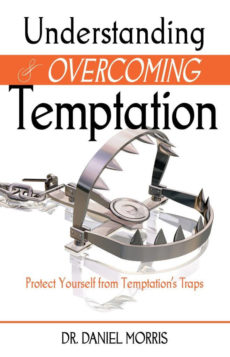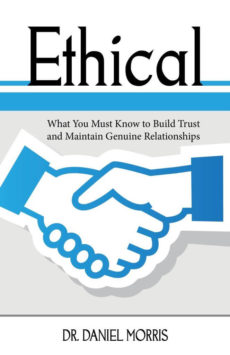What Do the Amish Believe?
Original price was: $17.99.$12.59Current price is: $12.59.
Biblical context makes this an informative resource for those who wish to know more about the plain people and a helpful book for Anabaptists who wish to better understand what they themselves are being taught and believe.
Share this product
The majority of Amish and conservative Mennonites are certain concerning church and lifestyle practices, but are content to avoid diving into most deep, biblical topics. That lack made compiling this book a bit of a challenge, so we drew heavily from The Dordrecht Confession of Faith and information provided by Anabaptist scholars of today to make sure we accurately portray what the majority of plain people believe.
Each chapter focuses on one important biblical topic and is essentially an Amish and Mennonite systematic theology study. In addition, each section includes a closer look at what the Bible teaches about each topic. That biblical context makes this an informative resource for those who wish to know more about the plain people and a helpful book for Anabaptists who wish to better understand what they themselves are being taught and believe.
This study defines:
- Who is God the Father?
- Who is Jesus Christ?
- Who is the Holy Spirit?
- What is the Bible?
- What and Who is the Church?
- What are Angels, Demons, and Satan?
- What is Humanity and Who are Men and Women?
- What Happens at the End?






2 reviews for What Do the Amish Believe?
I was excited to receive a copy of What Do the Amish Believe? from Aneko Press. I’ve always had an interest in learning about the Amish and Mennonite cultures and this book promised to give me a clear understanding. What I didn’t expect was a better understanding of Scripture. I’ve been a Christian for 52 years. I also have two seminary degrees, but as I read the book, I learned a few things!
One of the things I learned was about the history of the Amish culture. I hadn’t studied that before and was intrigued to learn of the origin of the religion. Reading about the extensive persecutions during the time of the early years of the Amish faith saddened me but made me realize a dedicated faith comes with consequences.
I liked how the book presented various topics and then gave the Amish perspective on each. After the Amish beliefs were shared, a biblical view was given. As I read each viewpoint, I realized there wasn’t a lot of difference between the beliefs of the Amish and the beliefs of my faith, Christianity. I wasn’t surprised to learn the Amish peoples were more focused on works but their religion seemed to have solid doctrine that was biblically based and that put my mind at ease. Included at the end of each chapter, a prayer was included. These prayers were powerful and filled with desires that all followers of Christ should utter.
Topics covered in the book included:
God
Jesus Christ
The Holy Spirit
The Bible
The Church
Angels, Demons and Satan
Humanity
Sin and Salvation
The End Times
I would recommend this book to anyone seeking to understand the Amish culture but it would also be beneficial to those wanting to understand more about Christian doctrine. A clear and concise presentation of Scripture gives the reader understanding of the Bible in ways they may have never learned.
I’d like to thank Aneko Press for allowing the opportunity to review this book in exchange for my honest opinion. I was not encouraged to give a positive review, however it is my pleasure to do so.
“They can repeat what they are taught, but they can’t show others what the Bible actually says about those beliefs” (page 59 from What Do the Amish Believe).
What Do the Amish Believe is a book compiled by Aneko Press and MAP Ministry (Mission To Amish People). It contains a forward by a former Old Order Mennonite, a brief history of the old orders, nine chapters for each of the Anabaptist nine central doctrines, and a few pages information on the Amish across America complete with an order form for mail order Bible studies from MAP.
As an author who understands how difficult it is to write down one’s beliefs, let alone write the beliefs of an entire religious community, I do appreciate the work as a whole. As far as my opinions as a reader and reviewer of this work, I was left with many questions, even as a believer in the core doctrines he describes.
This book did help me understand why it can be so confusing for the Amish that decided to leave their communities. Much of what the Amish believe, as is typical of many religions that point to the Anabaptist history as their own, correlate with conservative renderings of Scripture. The issue for the Amish, as is for many literal interpreters of the Bible and conservative readers, is they do not know how to apply their beliefs personally which results in not really understanding why they believe what they believe. From my understanding, much of what the book declares the Scriptures teach, the Amish also believe it teaches, they just interpret it more strictly to the point of eliminating grace, love, and mercy (the weightier matters of the law).
Each chapter explains what the Amish teach along with excerpts from their historical documents, and then what the Scriptures actually teach. How it explains what Scripture is supposed to actually teach read quite similar to the style of the Amish interpreting Scripture. For instance, the chapter on angels, demons, and Satan completely overlooks that we live in an age of updated medical science. Mental problems are not conclusive evidence that an evil spirit is now in control. Often times, fear and anger and guilt are natural responses to circumstances beyond our control and physical illness rather than a deviant spiritual monster. Often throughout the nine chapters sections on what do the Scriptures actually teach, the reader is admonished to obey authority, but at the same time is told to only be surrendered to God. It is not further explained anywhere or taken into account that authority can be wrong and authority in and of itself does not deem divine control. I believe the author and the ministry realize this as they have put forth a book explaining what is wrong with Amish authority, but then they in turn become the new authority and no questioning their interpretation seems to be allowed.
Overall, I feel what was most helpful was the information provided on the history of the old orders. It would be neat to read a book by Aneko Press and MAP explaining the old orders in relation to widespread culture from the origins of Anabaptist history until present. This could include all of the different religions emerging from Anabaptist belief, including today’s Baptists.